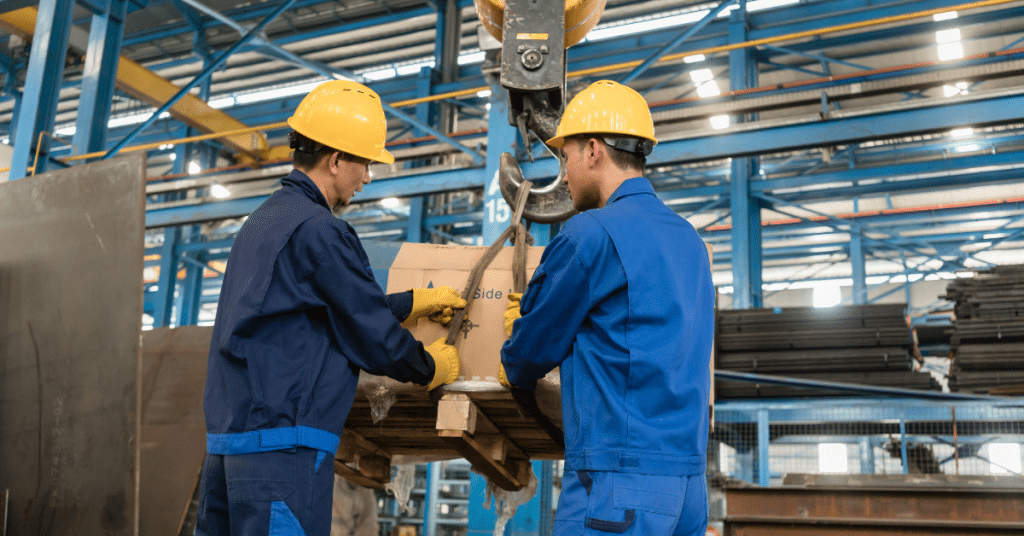Magnetic separators play a vital role in many industries by removing metal contaminants from bulk materials. Proper use of these devices protects machinery, improves product quality and reduces downtime. This guide covers common types of separators and how to choose the right equipment for your needs.

Why Magnetic Separation Matters
When raw materials move along a conveyor, unwanted metal pieces can damage downstream equipment. Installing a magnetic separators setup early in the process protects crushers, grinders and mills. Catching metal before it reaches sensitive parts lowers repair costs and keeps production on track.
Key Components of a Magnetic Conveyor System
A magnetic conveyor system combines magnets with belts or rollers to pull out ferrous debris automatically. As material travels, magnets attract nails, bolts and shards. Clean material continues onward while metal sticks to the magnetic section. Common setups include:
- Magnetic separator conveyor belts fitted with magnet modules under the belt to extract small contaminants.
- Magnetic roller conveyor where rollers house powerful magnets to lift metal away from the product stream.
- Magnetic head pulley acting as the drive pulley at the end of a conveyor, dropping captured metal into a separate bin as the belt wraps around it.
Types of Industrial Magnetic Separators
Different applications call for specific designs. Here are the most common models:
Drum and Roller Separators
A magnetic drum separator features a rotating drum shell with internal magnets. As material feeds onto the drum, metal particles cling to the shell and are carried away from the non‐metallic fraction. A wet drum magnetic separator adds water to wash away fine particles, improving recovery in mineral processing.
Similarly, a magnetic roller separator uses a stationary magnet inside a rotating shell to capture and discharge metal continuously.
Overbelt and Cross‐Belt Magnets
An overbelt magnet hangs above a conveyor and sweeps magnetized debris from the belt surface. This design is easy to retrofit on existing lines.
A cross belt magnetic separator places a magnet on a smaller belt that runs across the main conveyor. Metal lifts off the main belt, travels on the cross belt and drops into a collection box.
High Intensity and Low Intensity Options
Magnet strength matters for fine or weakly magnetic particles. A high intensity magnetic separator uses rare‐earth magnets to pull out very small or weak metals, ideal for recycling or mineral separation.
A low intensity magnetic separator handles larger, strongly magnetic pieces found in quarry and aggregate operations.
Specialty Magnetic Separators
Some processes need tailored solutions:
- A drum type magnetic separator combines features of drums with adjustable magnet arrangements for varied feed materials.
- A magnetic dirt separator fits into pipelines to clear rust and scale from water or chemical lines.
- A magnetic pulley separator integrates magnets into the drive pulley, providing a simple retrofit for belt conveyors.
Choosing the Right Magnetic Conveyor Belt Price
Prices vary with size, magnet strength and automation level. To compare magnetic conveyor belt price, gather quotes specifying belt width, throughput rate and contaminant type. Budget for installation and any control systems needed for self‐cleaning magnets.
Working with Suppliers and Manufacturers
Partnering with experienced magnetic separation equipment suppliers ensures you get reliable gear and post‐sale support. A good magnetic separator manufacturer will guide you through options, from simple manual units to fully automated conveyor magnetic separator systems.
Installation and Maintenance Tips
Proper mounting and alignment keep magnets working at full strength. Ensure belts run smoothly over magnetic separator for belt conveyor sections to avoid wear. Regularly inspect surfaces for build‐up and clean magnets according to the manufacturer’s schedule. Check that water lines in wet separators remain clear and rollers turn freely.
Real-World Applications
A recycling plant installed a cross belt magnetic separator after its shredder. This removed steel fragments before further processing, reducing cutter wear by 60%. A food mill added a magnetic drum separator ahead of its mixer to protect blades from small nails and wire, cutting maintenance hours in half.
Summary
Choosing the right combination of industrial magnetic separators, from suspended electromagnet units to wet drum magnetic separator designs, safeguards equipment and improves product purity. By understanding magnet types, installation needs and maintenance routines, you can keep your material handling line running smoothly with minimal downtime.